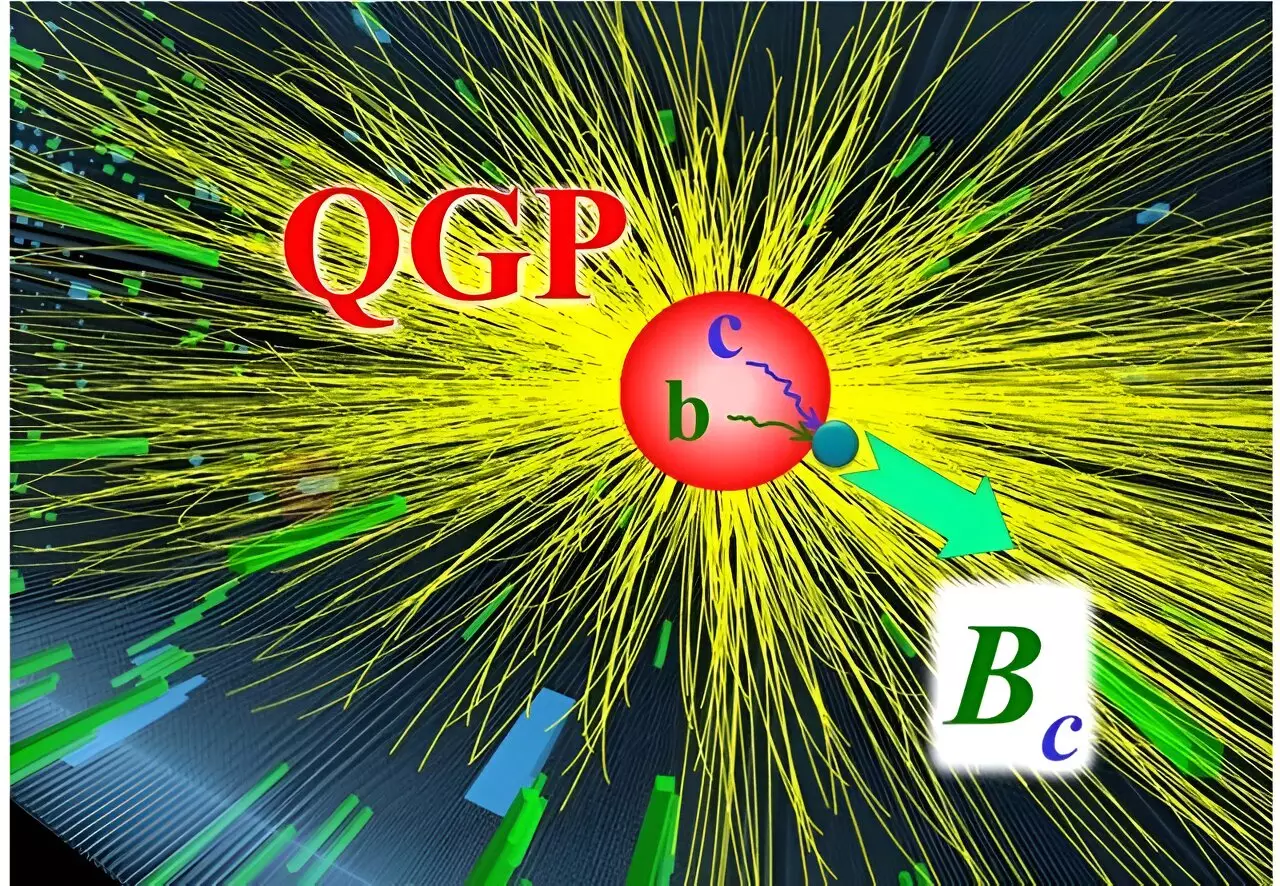The study conducted by researchers from the HEFTY Topical Collaboration delves into the recombination of charm and bottom quarks into Bc mesons within the quark-gluon plasma (QGP). This research has led to the development of a transport model that realistically simulates the movement of heavy-quark bound states within the expanding QGP fireball that forms during high-energy heavy-ion collisions.
The findings of this study have provided valuable insights into the production of Bc particles, which are charm-antibottom bound states. By utilizing theoretical simulations, researchers were able to demonstrate that the recombination of charm and bottom quarks within the QGP environment significantly enhances the production of Bc mesons. This phenomenon serves as a unique signature of QGP formation, distinguishing it from other types of collisions like proton-proton interactions.
The research team utilized realistic spectra of charm and bottom quarks to evaluate the recombination processes taking place within the QGP. Their results indicated a substantial increase in the yield of Bc mesons in lead (Pb) nucleus collisions when compared to proton collisions. The most significant effect was observed in scenarios involving slow-moving Bc mesons and “head-on” collisions of Pb nuclei, resulting in the formation of a large QGP fireball with significant numbers of charm and bottom quarks.
While the theoretical calculations align with initial data from the CMS collaboration at the Large Hadron Collider (LHC), the current data lack the sensitivity required to detect slow-moving Bc mesons accurately. Therefore, future data collection efforts are essential in providing a critical test of this unique QGP signature and further validating the findings of the HEFTY Topical Collaboration’s research.
The study on charm and bottom quark recombination in Bc meson production represents a significant advancement in our understanding of heavy-ion collisions and the dynamics of the quark-gluon plasma. The ability to predict and observe the enhanced production of Bc particles serves as a crucial step towards unlocking further mysteries surrounding the formation and characteristics of the QGP. The ongoing collaboration between researchers from various institutions will undoubtedly lead to more profound insights into this fascinating area of particle physics.


Leave a Reply